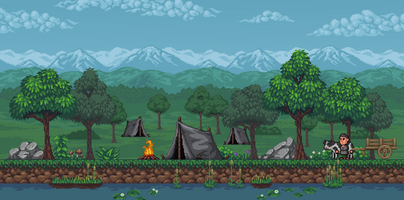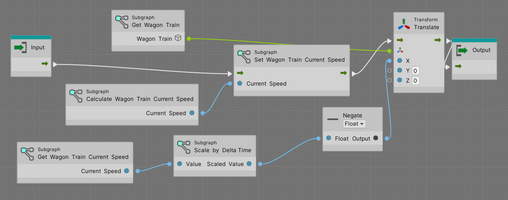The Journey Begins


Starting today, I’ve officially begun working on Pioneer Quest—well, at least part-time for now, but we’ll see. Maybe with some support, I can eventually dedicate myself to the project full-time. Since this marks the start of development, I wanted to share some insights about the technology behind the game. I chose Unity, specifically the latest LTS version, as the engine to build the game.
Why Unity? I debated between Unreal and Unity, but Unreal seemed like overkill for this 2D project—more like bringing a cannon to a knife fight. Given my extensive experience with Unity, it just made sense, even though Unity has some minor optimization challenges. I also made a somewhat unconventional decision for the sake of speed: instead of coding in C#, I opted for Visual Scripting. It’s similar to Unreal's node-based system, where you connect nodes instead of writing lines of code. From my experience on another project, this can cut development time by up to 90%, which is huge.
For the graphics, I went with pixel art. So far, I think it looks pretty solid—it doesn’t have that "kids’ coloring book" vibe that seems weirdly popular today. Pixel art gives me more freedom to focus on what truly matters: gameplay. However, this is just the temporary graphical direction. If any talented artists out there have better ideas and want to collaborate, I’m open to exploring new styles. The current graphics are from the Asset Store, but don’t worry! Before release, most (if not all) will be custom-made, and the game will be more rooted in a colonial setting. And yes, I know a cow isn’t the ideal animal to pull a wagon, but hey, I grabbed the first animated sprite I had available! 😄
The first area of focus has been the "traveling scene," which is essentially the core of the game, where 90% of the action will happen. I used an existing Unity asset for the scene, which aligns well with the game’s mechanics and visual feel, allowing me to jump straight into the gameplay elements.
The very first mechanic I implemented was the movement of characters and wagons, including their animations. Movement is influenced by acceleration, meaning it takes a moment for the wagon to start or stop, which sets the foundation for different terrain types in the future. Think of slower crossings through rivers or trudging through snow or mud.
Another feature I added is the parallax effect, which gives the background dynamic depth and enhances the sense of movement. I’m currently working on an infinite parallax system, along with map generation that includes random elements and their placement. I’ll keep you updated on how that progresses over the next few days.
If you like what I’m doing and want to support the project, feel free to contribute financially—this would be the biggest help right now—or join us on Discord at https://discord.gg/BFCTC3NxST. There are plenty of ways to help, and I’m sure we can figure something out!
Stay tuned for more updates!
Files
Get Pioneer Quest
Pioneer Quest
[Pre-Alpha Early Access] Oregon Trail inspired sandbox survival game
| Status | In development |
| Author | Rusty Wheel Development |
| Genre | Survival, Role Playing, Simulation |
| Tags | Atmospheric, Indie, Singleplayer, Solo RPG, Unity |
| Languages | Czech, English |
| Accessibility | Subtitles, Configurable controls, Interactive tutorial |
Leave a comment
Log in with itch.io to leave a comment.